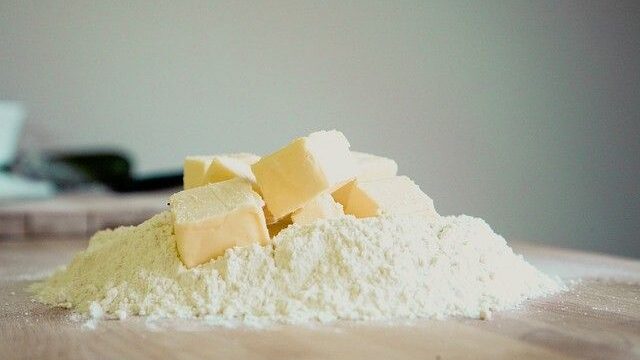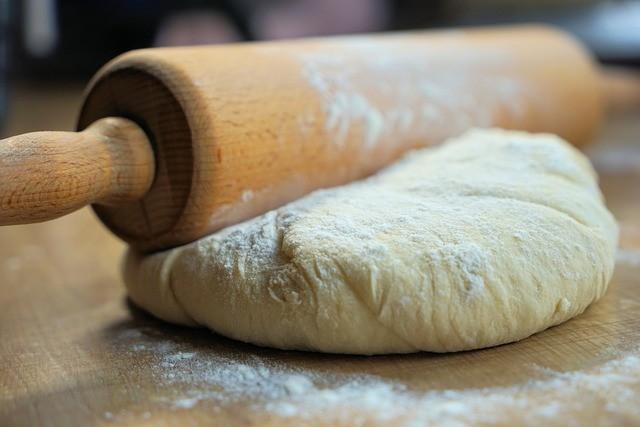Mastering pastry dough is a fundamental skill for any baker. The perfect dough produces tender, flaky crusts and buttery layers that elevate any baked dish, from pies to tarts. This comprehensive guide explains the science, tools, and techniques required to achieve exceptional pastry dough every time.
Historical Facts About Pastry Dough
Pastry dough has been an essential part of baking for centuries, evolving through cultures and traditions:
- Origins: The concept of pastry dates back to ancient Egypt, where early versions were made from flour and water.
- Greek and Roman Influence: These civilizations advanced pastry-making by incorporating olive oil and honey into basic doughs.
- Medieval Europe: Pastry art flourished during the Middle Ages, with royal kitchens experimenting with enriched doughs to create layered tarts and pies.
- Renaissance Innovation: By the 16th century, French and Italian bakers refined techniques like lamination, leading to modern puff pastry.
- Global Spread: Colonialism and trade routes introduced pastry techniques to different parts of the world, adapting to local ingredients and flavors.
- Industrial Era: The 19th century saw pastry production shift with machinery, making classics like croissants and pies more accessible.
Pastry dough’s rich history showcases the ingenuity of cultures across time, each contributing techniques and styles that continue to influence modern baking.
Varieties of Pastry Dough and Key Ingredients
Pastry doughs vary widely, each type tailored for specific dishes and textures:
- Shortcrust Pastry: Known for its crumbly texture, this dough is a simple mix of flour, butter, and water. It’s used in pies, tarts, and quiches.
- Puff Pastry: This laminated dough is created by layering butter into flour dough through repeated rolling, resulting in flaky, airy textures. Ideal for croissants and danishes.
- Choux Pastry: A cooked dough made from butter, water, flour, and eggs, it puffs up when baked, perfect for éclairs and cream puffs.
- Filo Pastry: Thin, paper-like sheets made with flour and water. Common in Mediterranean dishes like baklava and savory pies.
- Rough Puff Pastry: A quicker alternative to puff pastry, combining butter and flour chunks for a semi-flaky texture. Often used in turnovers and sausage rolls.
- Sweet Pastry: Similar to shortcrust but includes sugar for desserts like fruit tarts and custard pies.
Key Ingredients:
- Flour: Provides structure.
- Fat: Butter, shortening, or oil adds richness and texture.
- Liquid: Water or milk binds the dough.
- Eggs: Add moisture and aid in rising for some pastry types.
- Sugar and Salt: Enhance flavor and improve browning in sweet or savory applications.
Mastering these varieties and their ingredients opens a world of possibilities in baking, from savory quiches to delicate pastries.

What Makes Pastry Dough Perfect?
Creating pastry dough involves balancing key ingredients, using proper techniques, and understanding how each component contributes to the final product.
The Role of Ingredients in Pastry Dough
- Butter: The cornerstone of flaky layers. Butter’s fat content creates steam pockets during baking, forming a crisp, layered texture.
- Flour: Low-protein flour, like pastry or all-purpose flour, is ideal. Too much gluten leads to toughness, while less gluten allows for tenderness.
- Liquid: Ice-cold water or milk binds the ingredients without activating excessive gluten. Some recipes use vinegar or lemon juice to tenderize the dough.
- Salt: Enhances flavor and balances sweetness in pastry-based desserts or savory dishes.
Ingredient Tips:
- Always chill butter, flour, and liquid to keep the dough cold.
- Measure ingredients accurately using a kitchen scale for precision.
- Avoid substitutions unless you understand how they will affect the texture.
The Importance of Cold Ingredients
Temperature plays a vital role in pastry dough’s structure and consistency.
- Cold butter remains solid, creating layers during the folding process.
- Using chilled liquids prevents the dough from becoming sticky or overworked.
- Refrigerating the dough after mixing firms up the fats and relaxes gluten, making it easier to roll and shape.
Tip: If your kitchen is warm, chill your mixing bowl and tools before starting.
Tools for Perfect Pastry Dough
Equipping yourself with the right tools simplifies the process and ensures consistent results.
Essential Tools for Pastry Making
- Pastry Cutter or Food Processor: Ideal for cutting butter into the flour without melting it.
- Rolling Pin: A heavy rolling pin (wooden or marble) helps achieve even thickness.
- Silicone Baking Mats: Provide a non-stick surface for rolling and shaping.
- Bench Scraper: Useful for handling and folding dough without adding excess heat.
- Measuring Tools: Accurate scales and measuring cups ensure consistency.
Optional Tools for Advanced Bakers
- Pastry Blender: For precise control over butter incorporation.
- Pastry Wheel: Creates decorative edges for pies and tarts.
- Cooling Rack: Prevents crusts from becoming soggy after baking.
Investing in quality tools not only saves time but also ensures flawless results.
Techniques for Flaky Pastry Crusts
Flaky crusts are achieved through proper handling and technique. Each step plays a critical role in creating those iconic layers.
Cutting Butter Into Flour
Properly cutting butter into flour is the foundation of flaky pastry.
- Use a pastry cutter, food processor, or your hands to incorporate butter until the mixture resembles coarse crumbs.
- Aim for pea-sized pieces of butter; this ensures even melting and steam creation during baking.
Pro Tip: Work quickly to prevent the butter from softening. If the butter starts to melt, refrigerate the mixture for 10 minutes before continuing.
Folding and Laminating the Dough
Layering is the secret to creating buttery, flaky crusts.
- Step 1: Roll out the dough into a rectangle.
- Step 2: Fold it into thirds, like a business letter.
- Step 3: Rotate the dough and repeat the rolling and folding process 2–3 times.
- Step 4: Chill the dough between folds to prevent overworking.
Laminating introduces layers of fat and dough, ensuring a delicate, flaky texture.
Resting the Dough
Resting is a critical yet often overlooked step.
- Before Rolling: Chill the dough for at least 30 minutes to relax gluten and firm up fats.
- After Shaping: Refrigerate the crust before baking to prevent shrinkage and maintain the shape.

Crafting and Troubleshooting Pastry Dough
Achieving perfection in pastry dough involves mastering the process and being prepared to troubleshoot common challenges. This section dives into step-by-step guidance, advanced techniques, and solutions to ensure your pastry is always flawless.
Step-by-Step Guide to Making Perfect Pastry Dough
1. Preparing the Ingredients
- Chill all ingredients, including butter, flour, and liquid, before beginning.
- Cut butter into small cubes or thin slices for even distribution.
- Use a kitchen scale for precise measurements; accuracy is critical for consistency.
Pro Tip: Place a mixing bowl and utensils in the refrigerator for a few minutes to keep everything cold during preparation.
2. Mixing the Dough
- Combine Dry Ingredients: Mix flour and salt in a large bowl.
- Cut in Butter: Use a pastry cutter or food processor to incorporate butter until the mixture resembles coarse crumbs. Avoid overworking the dough.
- Add Liquid Gradually: Slowly add ice-cold water, one tablespoon at a time, while mixing gently. Stop as soon as the dough holds together when pressed.
3. Resting and Chilling
Resting the dough is essential to prevent toughness and ensure flakiness.
- Wrap the dough tightly in plastic wrap to prevent drying.
- Chill for at least 30 minutes, allowing the butter to solidify and the gluten to relax.
4. Rolling and Shaping
- Dust a clean surface and rolling pin with flour to prevent sticking.
- Roll the dough evenly, rotating it frequently to maintain uniform thickness.
- Use a bench scraper to lift and reposition the dough if it sticks.
Important: Avoid stretching the dough, as it can cause shrinkage during baking.
5. Baking to Perfection
- Blind Baking: For pies or tarts requiring a pre-baked crust, line the dough with parchment paper and add pie weights to prevent puffing.
- Monitor Temperature: Bake in a preheated oven, checking frequently for even browning.
Pro Tip: Rotate the baking dish halfway through to ensure uniform cooking.
Advanced Pastry Techniques
Folding and Laminating for Extra Layers
For ultra-flaky crusts, laminating the dough creates additional layers of fat and flour.
- Roll the dough into a rectangle and fold it into thirds.
- Chill for 15 minutes, then repeat the rolling and folding process 2–3 times.
- This technique is particularly effective for croissants and puff pastry.
Specialty Ingredients for Enhanced Flavor
- Cream Cheese: Adds richness and tang, ideal for sweet pastries.
- Sour Cream or Yogurt: Provides tenderness and a slight tangy flavor.
- Herbs and Spices: Mix fresh herbs or ground spices into the dough for savory tarts or quiches.
Troubleshooting Pastry Dough Issues
Even with careful preparation, problems can arise. Here’s how to fix them:
Dough Too Sticky
- Cause: Warm butter or excessive liquid.
- Solution: Refrigerate the dough for 10–15 minutes and sprinkle with a small amount of flour before rolling.
Crust Too Tough
- Cause: Overworking the dough or too much water.
- Solution: Handle the dough minimally and ensure butter pieces remain visible before rolling.
Dough Cracks While Rolling
- Cause: The dough is too dry or too cold.
- Solution: Let the dough sit at room temperature for a few minutes or add a few drops of water and knead gently.
Uneven Browning
- Cause: Hot spots in the oven or uneven dough thickness.
- Solution: Use an oven thermometer and rotate the baking dish halfway through baking.

Frequently Asked Questions About Pastry Dough
Why is my pastry dough shrinking during baking?
Shrinking occurs when the dough is stretched during rolling or when it isn’t rested enough. Always allow the dough to relax before baking.
Can I make pastry dough ahead of time?
Yes, pastry dough can be refrigerated for up to 3 days or frozen for up to 3 months. Thaw frozen dough in the refrigerator before using.
Should I use salted or unsalted butter?
Unsalted butter is preferred for better control over salt content. If using salted butter, adjust the added salt in your recipe.
How do I store leftover pastry dough?
Wrap the dough tightly in plastic wrap and store it in the refrigerator for short-term use. For longer storage, freeze it.
Tips for Consistently Great Pastry Dough
- Always work quickly to keep ingredients cold.
- Chill the dough at every stage to maintain its integrity.
- Practice laminating techniques for professional-quality layers.
- Experiment with different fats and liquids to suit your recipe.

